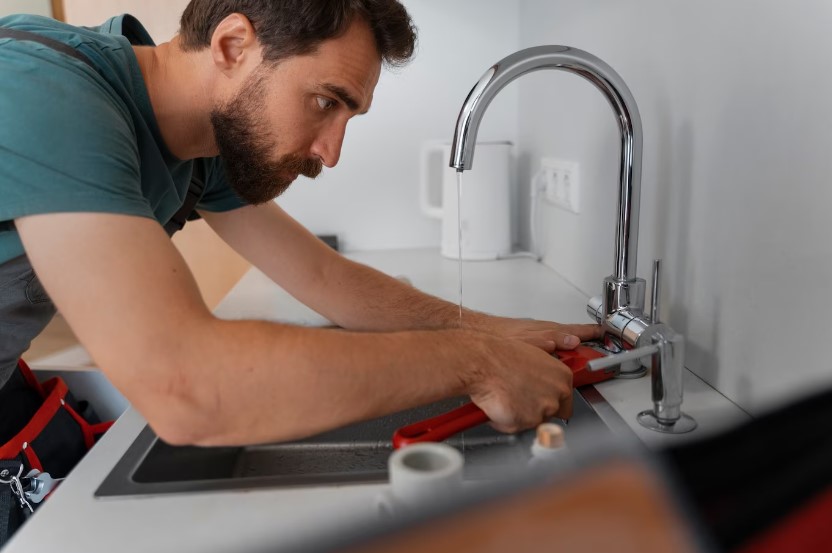A plumbing system is an important part of a home. You depend on it for cleaning, cooking, drinking, and disposing of waste.
Unfortunately, even a durable plumbing system starts to wear out over time, resulting in a wide range of issues that may compromise a home’s functionality, comfort, and safety.
Although minor issues can easily be repaired, major ones require you to completely replace the entire system. So, to determine when to replace your plumbing system, the following are warning signs to watch out for:
1. Leaking Pipes
Just because your plumbing pipes don’t have visible cracks doesn’t mean they aren’t leaking. Leaks happen when there is a loose connection between pipes. This, in turn, may turn out to be a serious issue, especially if exposed to too much pressure.
Of course, you must hire a plumber for emergency plumbing Calgary to help you fix the leakage immediately. In many cases, leaking pipes will require replacement.
2. Discolored Water
Water discoloration is an issue unless you live in a rural place, use well water, or are under a boil order. This dark or brown water results from corrosion in the pipes, leaving rust.
If you don’t address this problem immediately, mineral deposits will clog your pipes, building pressure. In this condition, your pipes will burst eventually, leading to catastrophic damage.
3. Slow or Clogged Drains
Clogged drains may seem like a small issue, but they may result in a more serious problem. Sometimes, clogged or slow-moving drains happen due to poor venting in your pipes. If vents get blocked or damaged, you will require an experienced plumber to help you assess the issue and even make the necessary fixes.
Tree roots and plants are often unseen issues, which may result in slow or clogged drains. Part of the drain system is beneath, and roots may sometimes puncture your drain pipes, causing a blockage. When that happens, you will need to replace the entire system.
4. Visible Corrosion
Normally, corrosion weakens plumbing pipes and results in leaks. This, in turn, leads to health hazards and water damage. For that reason, inspecting all the exposed pipes, especially under the sink, in crawlspaces, and in basements, for corrosion signs is important.
Greenish-blue stains, flaking metal, or rust on pipes are signs of corrosion. Mostly, corroded pipes are likely to cause water damage when left unattended. In addition, carrion may affect showerheads, faucets, and other fixtures.
5. Plumbing and Piping Network Age
Understanding the different kinds of pipes installed at homes and their lifespan is important. You should also examine their condition regularly.
For instance, a water line made of brass has a lifespan of about 4 to 7 decades, and those made of galvanized steel can between 20 and 50 years.
Avoid polyvinyl chloride and polybutylene pipelines, as they have a short lifespan. They are vulnerable to regular repairs and damages.
If you notice any unusual plumbing issues or believe it is time to replace your plumbing system, contact a knowledgeable and experienced plumber. Such a plumber will assure you of unmatched value and controlled, safe, and quality services.







